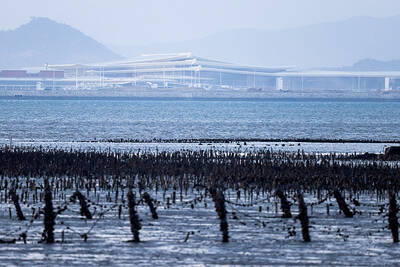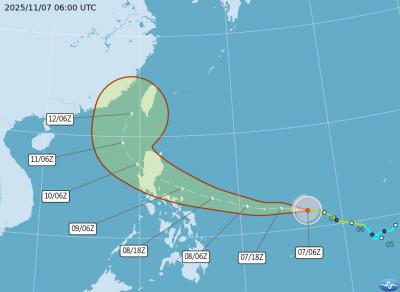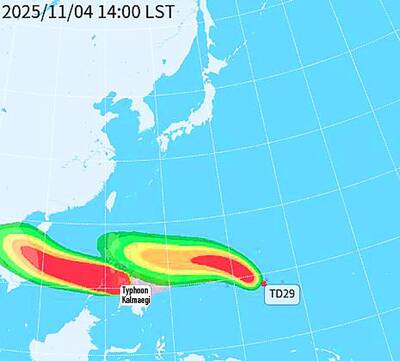Unusual urine color or tablets in stool can be normal for people taking medication and not a cause for alarm, a pharmacist said.
Drugs come in many forms and vary with pharmaceutical advances, such as sublingual tablets that introduce effects rapidly, coated tablets that ensure medication is released in the intestines and time-released tablets, Changhua Christian Hospital pharmacist Tsai Min-fang (蔡旻芳) wrote in an article published on April 2 in the Liberty Times (the Taipei Times’ sister newspaper).
Certain time-release tablets use specific coatings so that the medication slowly “seeps” through, giving it a steady and long-term effect, she said.
Ultimately, this coating is ejected from the human body along with excrement, which is why some people might see medication tablets in their waste, she said.
These include medications used to treat prostate hypertrophy, hypertension or cardiovascular diseases, she said.
She also said that medication processed by the human body could change the color of urochrome, the main chemical that affects the color of urine.
Tsai said that ingesting vitamin B often results in bright yellow urine, and urethritis drug phenazopyridine and rheumatoid arthritis medication sulfasalazine can turn urine orange.
Other medication, such as amitriptyline, used to treat depression and anxiety, and cimetidine, to treat digestive issues, could turn urine green, she added.
If a change in urine color is a result of medication, it would not be lasting and would revert to normal once the patient has stopped taking the medicine, she said.
People should not be alarmed when they see a change in the color of their urine and should instead pay attention to how they feel, Tsai said, adding they should also read carefully the directions and warnings provided with the medication.
If concerned, they should contact their doctor or pharmacist to verify that they are not experiencing complications from the medicine, she said.

UNILATERAL MOVES: Officials have raised concerns that Beijing could try to exert economic control over Kinmen in a key development plan next year The Civil Aviation Administration (CAA) yesterday said that China has so far failed to provide any information about a new airport expected to open next year that is less than 10km from a Taiwanese airport, raising flight safety concerns. Xiamen Xiangan International Airport is only about 3km at its closest point from the islands in Kinmen County — the scene of on-off fighting during the Cold War — and construction work can be seen and heard clearly from the Taiwan side. In a written statement sent to Reuters, the CAA said that airports close to each other need detailed advanced

Tropical Storm Fung-Wong would likely strengthen into a typhoon later today as it continues moving westward across the Pacific before heading in Taiwan’s direction next week, the Central Weather Administration (CWA) said. As of 8am, Fung-Wong was about 2,190km east-southeast of Cape Oluanpi (鵝鑾鼻), Taiwan’s southernmost point, moving westward at 25kph and possibly accelerating to 31kph, CWA data showed. The tropical storm is currently over waters east of the Philippines and still far from Taiwan, CWA forecaster Tseng Chao-cheng (曾昭誠) said, adding that it could likely strengthen into a typhoon later in the day. It is forecast to reach the South China Sea

Almost a quarter of volunteer soldiers who signed up from 2021 to last year have sought early discharge, the Legislative Yuan’s Budget Center said in a report. The report said that 12,884 of 52,674 people who volunteered in the period had sought an early exit from the military, returning NT$895.96 million (US$28.86 million) to the government. In 2021, there was a 105.34 percent rise in the volunteer recruitment rate, but the number has steadily declined since then, missing recruitment targets, the Chinese-language United Daily News said, citing the report. In 2021, only 521 volunteers dropped out of the military, the report said, citing

WEATHER Typhoon forming: CWA A tropical depression is expected to form into a typhoon as early as today, the Central Weather Administration (CWA) said yesterday, adding that the storm’s path remains uncertain. Before the weekend, it would move toward the Philippines, the agency said. Some time around Monday next week, it might reach a turning point, either veering north toward waters east of Taiwan or continuing westward across the Philippines, the CWA said. Meanwhile, the eye of Typhoon Kalmaegi was 1,310km south-southeast of Oluanpi (鵝鑾鼻), Taiwan’s southernmost point, as of 2am yesterday, it said. The storm is forecast to move through central